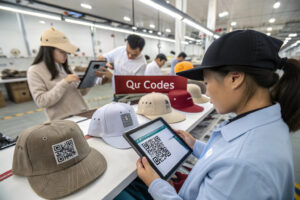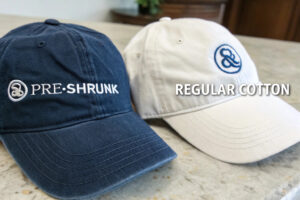How to Avoid Hat Brim Warping During Shipping?
Hat retailers and brands face significant challenges with brim warping during shipping, leading to customer returns, damaged brand reputation, and financial losses. The problem is particularly acute for structured hats with wide or stiff brims that can deform under pressure, heat, or improper handling during transit. Many businesses discover these issues only after customers receive damaged products, making prevention crucial rather than reactive solutions.
The most effective approach to preventing hat brim warping during shipping combines specialized packaging designs, strategic brim reinforcement, careful material selection, and shipping method considerations that work together to protect hat integrity from warehouse to doorstep.This comprehensive strategy addresses the multiple factors that contribute to brim deformation throughout the shipping journey.
This guide explores packaging innovations, manufacturing adjustments, material considerations, and shipping protocols that collectively prevent brim warping and ensure hats arrive in perfect condition.
What packaging solutions prevent brim deformation?
Packaging represents the first line of defense against brim warping during shipping. Standard box designs often fail to protect the delicate balance of hat structure, particularly for wide-brimmed styles.
Effective packaging solutions include custom inserts that support the crown and brim, strategic void fill that prevents movement without pressure, and box designs that accommodate hat proportions without compression.

Why are custom insert systems more effective than void fill?
Custom insert systems provide targeted support that generic packing materials cannot match. Unlike loose fill that settles during transit, custom molded pulp or foam inserts cradle the hat crown while supporting the brim's entire circumference. The most effective designs feature a central crown support that maintains the hat's internal shape, combined with a brim shelf that prevents downward pressure. These systems distribute weight evenly when boxes are stacked in shipping containers, preventing the point loads that cause permanent brim deformation. While custom inserts represent a higher initial investment, they typically reduce shipping damage rates by 70-85%, providing excellent return through reduced returns and customer satisfaction improvements.
How does box sizing impact brim protection?
Proper box sizing creates just enough space for the hat without excessive movement that leads to impact damage. The ideal hat shipping box provides approximately 1-1.5 inches of clearance around the entire hat, with specific attention to brim clearance. Boxes that are too large allow the hat to shift during handling, leading to impact damage, while boxes that are too small create compression that warps the brim against the box walls. For wide-brimmed hats, square or round boxes often work better than rectangular designs that can create uneven pressure points. The best suppliers conduct drop tests and compression tests with their specific hat styles to determine optimal box dimensions before scaling packaging solutions.
What manufacturing adjustments reduce warping risk?
Manufacturing decisions significantly impact how well hats withstand shipping stresses. Certain construction techniques and material choices create more shipping-resistant hats without compromising design integrity.
Strategic manufacturing adjustments include reinforced brim construction, material selections with better shape memory, and blocking techniques that create more resilient structures.

How does brim reinforcement improve shipping survival?
Brim reinforcement techniques significantly enhance a hat's ability to maintain its shape during shipping. Internal brim wires or stiffeners provide structural integrity that resists the compression forces encountered during shipping. The most effective reinforcements use flexible yet resilient materials like spiral steel wires or fiberglass strands that can absorb impact without permanent deformation. For felt hats, additional shellac applications or interfacing between felt layers creates more rigid brims that better withstand shipping pressures. These reinforcements should be balanced against wearability—overly stiff brims may be uncomfortable for customers, while insufficient reinforcement leads to shipping damage. Finding this balance requires understanding both manufacturing and logistics challenges.
Why do certain materials resist warping better?
Material properties significantly influence how hats withstand shipping conditions. Wool felts with higher density and stiffness ratings generally maintain their shape better than soft, pliable felts during shipping. Straw hats with tighter weaves and additional sizing treatments demonstrate better warping resistance than loosely woven natural straws. Technical fabrics with memory properties often recover better from compression than traditional natural materials. The best manufacturers understand these material characteristics and can recommend options that balance aesthetic requirements with shipping durability. In some cases, slightly adjusting material specifications can dramatically improve shipping outcomes without significantly affecting cost or appearance.
How do shipping conditions contribute to warping?
Understanding the specific hazards hats encounter during shipping helps design targeted protection strategies. The shipping environment presents unique challenges that differ from retail display or consumer use.
Key shipping hazards include compression during stacking, temperature and humidity fluctuations, vibration during transit, and handling impacts that can permanently deform hat brims.

Why does compression during stacking cause warping?
Compression from stacked packages creates sustained pressure that can permanently deform hat brims. During shipping, packages may be stacked several feet high in containers or trucks, generating significant downward force. Hat boxes positioned at the bottom of these stacks bear the most weight, often resulting in flattened or distorted brims. This problem is particularly acute during peak shipping seasons when carriers maximize container density. The solution involves both stronger packaging that distributes weight and internal supports that transfer stacking forces away from vulnerable brim areas. Understanding typical stacking patterns in your shipping channels allows for targeted protection where pressures are greatest.
How do temperature and humidity affect hat materials?
Temperature and humidity fluctuations during shipping can permanently alter hat materials, particularly natural fibers. High humidity can weaken the shellac in felt hats, making them more pliable and susceptible to deformation under normal shipping pressures. Extreme heat can cause synthetic materials to become more flexible, then reset in deformed positions when cooled. Shipping through different climate zones or storage in non-climate-controlled warehouses exacerbates these issues. The most comprehensive protection strategies include moisture-resistant packaging and, for premium hats, humidity control packets that maintain stable conditions inside shipping containers. Understanding your shipping routes' typical environmental conditions helps anticipate these challenges.
What quality control measures catch potential issues?
Proactive quality control identifies potential shipping vulnerabilities before products leave the factory, preventing widespread damage issues and customer dissatisfaction.
Effective quality control includes pre-shipping durability testing, packaging validation, and monitoring systems that track damage rates by shipping method and destination.

How can pre-shipping compression testing prevent damage?
Pre-shipping compression testing simulates the forces hats will encounter during transit, identifying vulnerable designs before they reach customers. Using standardized compression testers, manufacturers can apply controlled pressure to packaged hats and measure deformation. This testing helps determine optimal packaging designs, identify weak points in hat construction, and establish stacking limits for warehouse and carrier guidance. The most thorough testing programs evaluate hats after compression to ensure they return to their proper shape, not just whether they survive undamaged during testing. This approach catches materials with poor shape memory before they create customer satisfaction issues.
Why should damage tracking inform manufacturing decisions?
Systematic damage tracking provides data-driven insights for continuous improvement. By categorizing shipping damage by hat style, shipping method, destination, and damage type, patterns emerge that guide both manufacturing and packaging improvements. For example, if particular brim styles consistently warp when shipped to humid regions, manufacturers might adjust material treatments or reinforce specific areas. If certain carriers generate more damage, packaging might be strengthened for those routes. This data-driven approach moves beyond guesswork to targeted improvements that systematically reduce shipping damage over time. The most sophisticated systems track damage costs against prevention investments to optimize resource allocation.
Conclusion
Preventing hat brim warping during shipping requires a comprehensive approach that addresses packaging, manufacturing, materials, and shipping method considerations. The most successful strategies combine physical protection with design adjustments that create more shipping-resistant products without compromising aesthetic appeal. From custom packaging inserts that cradle delicate brims to manufacturing reinforcements that enhance structural integrity, each element contributes to ensuring hats arrive in perfect condition.
At Global-Caps, we've implemented a multi-layered anti-warping system that begins during manufacturing and continues through our packaging and shipping processes. Our experience shipping millions of hats worldwide has taught us the specific vulnerabilities different styles face during transit and how to address them proactively. If you're struggling with shipping damage or want to implement preventive measures from the start, contact our Business Director Elaine at elaine@fumaoclothing.com. Let us share our expertise in protecting hat integrity throughout the shipping journey to reduce returns and maintain customer satisfaction.







